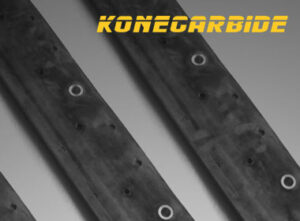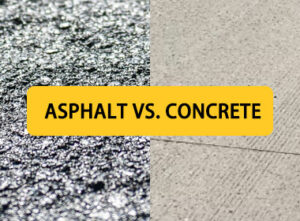Road milling can be regarded as pavement milling, but it is more than just paving roads. Today, we are going to dive into the world of road milling and learn detailed information such as the machinery, benefits, and more.

What Is Road Milling/Pavement Milling?
Pavement milling, also called asphalt milling, cold milling, or cold planing, is a process of removing part of the paved surface, covering roads, driveways, bridges, or parking lots. Thanks to asphalt milling, the height of the road won’t increase after laying down new asphalt and all the existing structural damages can be fixed. Moreover, the removed old asphalt can be recycled as aggregate for other pavement projects. For more detailed reasons, just read on!
Road Milling Purposes
There are several reasons for choosing the road milling method. One of the most important reasons is recycling. As mentioned above, old asphalt can be recycled as aggregate for new pavement projects. Recycled asphalt, also known as reclaimed asphalt pavement (RAP), combines old asphalt that has been milled or crushed and new asphalt. Using recycled asphalt instead of entirely new asphalt for pavement reduces a huge amount of waste, saves lots of money for businesses, and reduces adverse impacts on the environment.
Apart from recycling, road milling can also enhance the quality of road surfaces and extend service life, thus improving the driving experience. Specific issues that pavement milling can resolve are unevenness, damage, rutting, raveling, and bleeding. Road damage is often caused by car accidents or fires. Rutting means the ruts caused by the travel of wheels, such as heavily loaded trucks. Raveling refers to aggregate that is separated from each other. When asphalt rises to the road surface, bleeding happens.
Moreover, road milling is ideal for creating rumble strips.
Types Of Road Milling
There are three main types of road milling for dealing with different types of conditions. Special equipment and skills are required for each milling method accordingly.
Fine-Milling
Fine milling is used to renovate the surface layer of pavement and fix the surface damages. The process is as follows: remove the damaged surface asphalt, fix the foundational damages, and cover the surface with new asphalt. Then, smooth and level out the surface of the new asphalt.
Planing
Different from fine milling, planing is often employed in repaving large properties like major roadways. Its purpose is to build a level surface for residential, industrial, vehicular, or commercial applications. The planing process includes removing the whole damaged pavement instead of only the surface, using the removed particles to create aggregate, and applying the aggregate to the new pavement.
Micro-Milling
Micro milling, as the name suggests, only removes a thin layer (about one inch or less) of asphalt instead of the whole surface or pavement. The main purpose of micro milling is maintenance rather than repair. This is an excellent method to prevent the pavement from getting worse. A rotating milling drum is used in micro milling, with many carbide-tipped cutting teeth, aka road milling teeth, mounted on the drum. These road milling teeth are arrayed in rows to create a fairly smooth surface. However, unlike standard milling drums, micro milling only mills the surface to a shallower depth, yet solving the same road problems.
Process & Machinery
A cold milling machine performs pavement milling, also called a cold planer, mainly comprising a milling drum and a conveyor system.
As mentioned above, the milling drum is used to remove and grind the asphalt surface by rotating. The milling drum rotates in the opposite direction of the machine’s moving direction, and the speed is lower. It consists of rows of tool holders, holding carbide-tipped cutting teeth, aka road milling teeth. It’s the cutting teeth that actually cut the asphalt surface. As a result, cutting teeth and tool holders are easily worn out and need replacement when broken. Intervals are determined by the milling material, ranging from hours to days. The number of road milling teeth directly influences the milling effects. The more, the smoother.
During operation, the removed asphalt falls off the conveyor. Then, the conveyor system transfers the milled old asphalt to a human-driven truck which is slightly ahead of the cold planer.
In addition, the milling process generates heat and dust, so water is applied to cool the drum and minimize the dust.
After the asphalt surface has been milled to the desired width and depth, it needs to be cleaned. Then, new asphalt will be laid evenly to ensure the same surface height. The removed asphalt will be recycled for new pavement projects.
Benefits
Why do we choose asphalt milling as an important road maintenance method? We’ve mentioned above. Now, let’s discuss more of the key reasons.
Affordable and Economic Efficiency
Thanks to applying recycled or reclaimed asphalt, the cost is relatively low whichever pavement milling method you choose. Road maintenance contractors usually save recycled asphalt from past pavement projects. Only in this way, they are able to reduce costs and still provide great service to customers.
Environmental sustainability
Removed asphalt can be mixed with other materials and reused, thus it won’t be sent to landfills. Actually, most road pavement and maintenance projects use recycled asphalt.
No Drainage & Pavement Height Issues
New surface treatments can raise pavement height as well as cause drainage issues. With asphalt milling, there is no need to add multiple new layers on the top and there will be no structural problems like drainage defects.
KoneCarbide is an ISO-certified supplier of road milling teeth. If you have a demand, just request a quote. Our professional salespeople will reach out to you in time.








